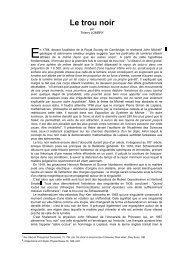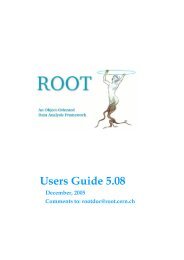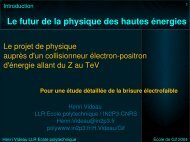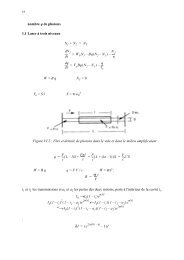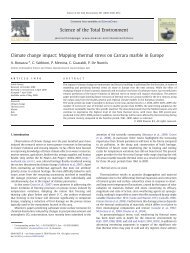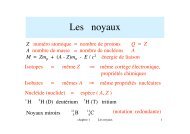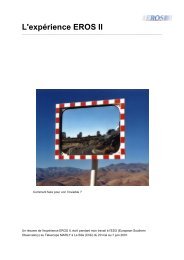XSPEC User's Guide
XSPEC User's Guide
XSPEC User's Guide
- No tags were found...
You also want an ePaper? Increase the reach of your titles
YUMPU automatically turns print PDFs into web optimized ePapers that Google loves.
38<br />
<strong>XSPEC</strong>12>mo pha(po)<br />
From the EXOSAT database on HEASARC, we know that the target in question, 1E1048.1--<br />
5937, has a Galactic latitude of 24, i.e., almost on the plane of the Galaxy. In fact, the database<br />
22 2<br />
also provides the value of the Galactic N H based on 21-cm radio observations. At 4<br />
10 cm , it is<br />
higher than the 90 percent-confidence upper limit from the power-law fit. Perhaps, then, the powerlaw<br />
fit is not so good after all. What we can do is fix (freeze in <strong>XSPEC</strong> terminology) the value of<br />
N H at the Galactic value and refit the power law. Although we won't get a good fit, the shape of the<br />
residuals might give us a clue to what is missing. To freeze a parameter in <strong>XSPEC</strong>, use the<br />
command freeze followed by the parameter number, like this:<br />
<strong>XSPEC</strong>12> freeze 1<br />
Number of variable fit parameters = 2<br />
The inverse of freeze is thaw:<br />
<strong>XSPEC</strong>12> thaw 1<br />
Number of variable fit parameters = 3<br />
Alternatively, parameters can be frozen using the newpar command, which allows all the<br />
quantities associated with a parameter to be changed. The second quantity, delta, is the step size<br />
used to calculate the derivative in the fitting, and, if set to a negative number, will cause the<br />
22 2<br />
parameter to be frozen. In our case, we want N H frozen at 4<br />
10 cm , so we go back to the power<br />
law best fit and do the following :<br />
<strong>XSPEC</strong>12>newpar 1<br />
Current: 0.463 0.001 0 0 1E+05 1E+06<br />
phabs:nH>4,0<br />
---------------------------------------------------------------------------<br />
---------------------------------------------------------------------------<br />
Model: phabs[1]( powerlaw[2] )<br />
Model Fit Model Component Parameter Unit Value<br />
par par comp<br />
1 1 1 phabs nH 10^22 4.000 frozen<br />
2 2 2 powerlaw PhoIndex 2.195 +/- 0.1287<br />
3 3 2 powerlaw norm 1.2247E-02 +/- 0.2412E-02<br />
---------------------------------------------------------------------------<br />
---------------------------------------------------------------------------<br />
2 variable fit parameters<br />
Chi-Squared = 829.3545 using 31 PHA bins.<br />
Reduced chi-squared = 28.59843 for 29 degrees of freedom<br />
Null hypothesis probability = 0.<br />
Note the useful trick of giving a value of zero for delta in the newpar command. This has<br />
the effect of changing delta to the negative of its current value. If the parameter is free, it will be<br />
frozen, and if frozen, thawed. The same result can be obtained by putting everything onto the<br />
command line, i.e., newpar 1 4, 0, or by issuing the two commands, newpar 1 4 followed by<br />
freeze 1. Now, if we fit and plot again, we get the following model (Fig. E).



